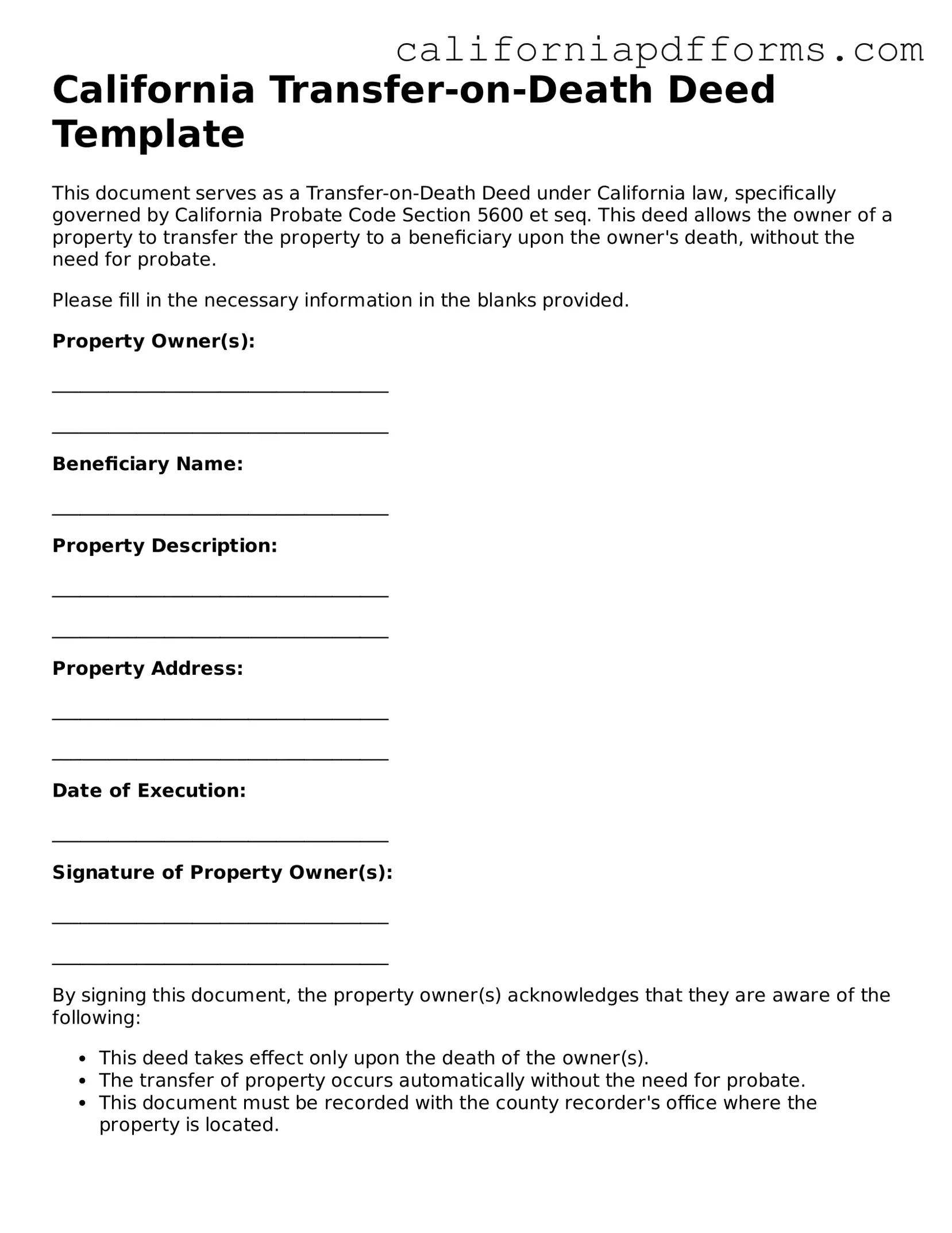What is a Transfer-on-Death Deed in California?
A Transfer-on-Death Deed (TOD Deed) is a legal document that allows a property owner to transfer their real estate to a beneficiary upon their death. This deed helps avoid probate, making the transfer of property smoother and more efficient for loved ones. The property remains under the owner's control during their lifetime, and they can revoke or change the deed at any time before passing away.
Who can use a Transfer-on-Death Deed?
Any individual who owns real property in California can use a Transfer-on-Death Deed. This includes homeowners and property investors. However, it is important to note that the property must be solely owned by the individual, as joint ownership may complicate the transfer process. Additionally, beneficiaries must be designated clearly in the deed.
How do I create a Transfer-on-Death Deed?
Creating a Transfer-on-Death Deed involves several steps:
-
Obtain the appropriate form, which is available online or through legal resources.
-
Fill out the form with the necessary information, including the property description and beneficiary details.
-
Sign the deed in the presence of a notary public to ensure its validity.
-
Record the deed with the county recorder's office where the property is located. This step is crucial for the deed to take effect.
It is advisable to consult with a legal professional to ensure that the deed is completed correctly and meets all legal requirements.
Can I revoke a Transfer-on-Death Deed?
Yes, you can revoke a Transfer-on-Death Deed at any time while you are alive. To do this, you must create a new deed that explicitly states the revocation of the previous deed. Alternatively, you can also revoke the deed by recording a formal revocation document with the county recorder's office. Always ensure that the revocation is executed properly to avoid any confusion later on.
What happens if I do not name a beneficiary?
If you do not name a beneficiary in your Transfer-on-Death Deed, the property will not automatically transfer upon your death. Instead, it will become part of your estate and will be subject to probate. This can lead to delays and additional costs for your heirs. Therefore, it is essential to designate at least one beneficiary to ensure a smooth transfer of property.
Are there any tax implications with a Transfer-on-Death Deed?
Generally, transferring property through a Transfer-on-Death Deed does not trigger immediate tax consequences. The property is transferred to the beneficiary at the owner's death, and they may inherit the property at its fair market value at that time. However, it is important to consult a tax professional to understand any potential tax liabilities or implications that may arise based on individual circumstances.
Can I use a Transfer-on-Death Deed for all types of property?
A Transfer-on-Death Deed can be used for most types of real property, such as residential homes, commercial properties, and vacant land. However, it cannot be used for personal property, such as vehicles or bank accounts. Additionally, properties held in certain types of trusts or properties subject to liens may have specific restrictions. It is wise to consult with a legal expert to determine the best approach for your specific situation.
